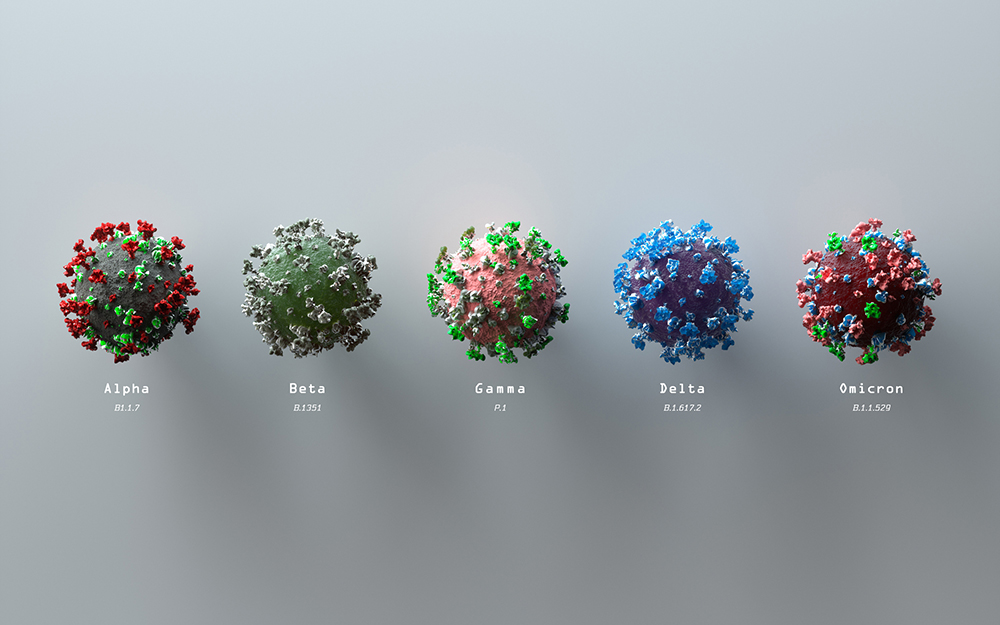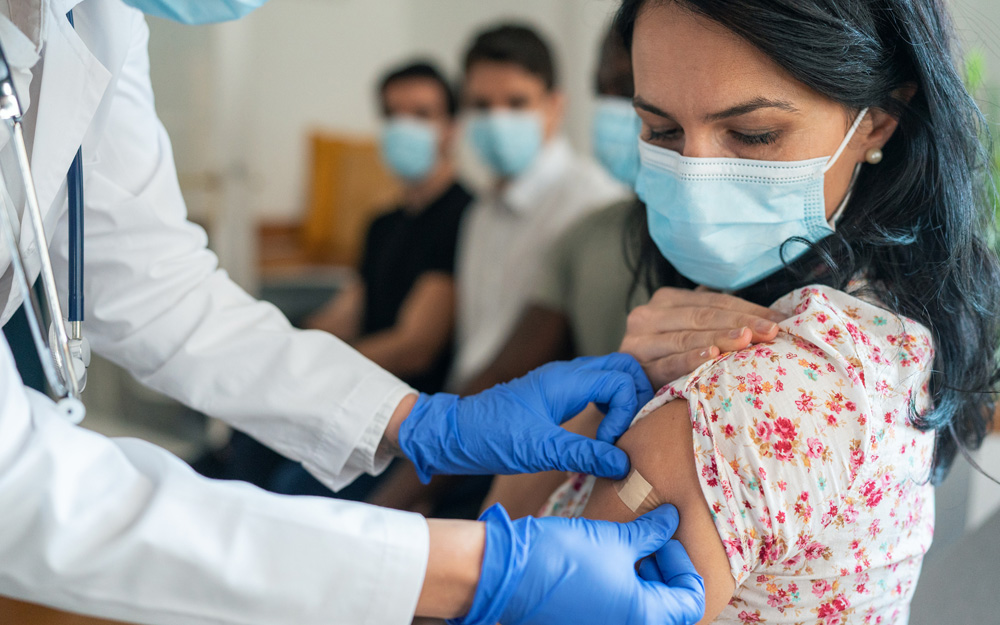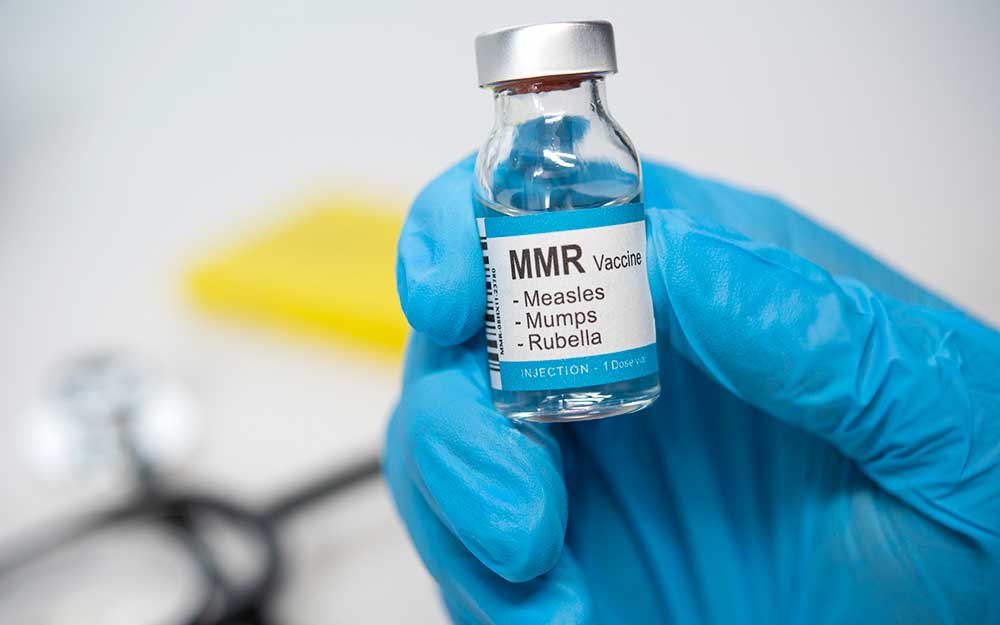What Causes COVID Arm?
Date
January 10, 2022

Date
January 10, 2022
Credits
Medical providers featured in this article
In Brief
{{cta-block}}

After receiving a COVID-19 booster dose, you likely feel relieved, knowing you're keeping yourself and your loved ones safe. But rolling up your sleeves, you notice a strange red or swollen patch on your arm.
While this might raise fears and questions—especially if you didn't have this reaction after earlier doses—there's no need for alarm. It's harmless and relatively common.
"I'm not sure it's really as unusual of a reaction as people might think," says Cedars-Sinai’s Dr. Caroline Goldzweig. It even has a name: "COVID arm."
The Omicron variant sent COVID-19 cases surging once again, with L.A. County experiencing some of the highest positivity rates seen throughout the pandemic. Many people are looking to strengthen their protection against the virus. More than 207 million Americans have been fully vaccinated, and almost 75 million of those—well over 1/3— have received booster doses, according to Jan. 8 Centers for Disease Control and Prevention figures.
Here's what to know about "COVID arm," which has been seen in patients receiving either of the mRNA COVID vaccines, Moderna and Pfizer-BioNTech.
"They're telling you that the vaccine is doing its job. Your body is responding, and it's building up its defenses against COVID."
"COVID arm" is a delayed but harmless allergic reaction
When a vaccine is administered into a muscle, antibody and fighter cells respond to try to ward it off.
"In some people, that reaction becomes too exuberant, and they can have an overly enthusiastic response to the vaccine—where the muscle cells think they're trying to fight off an actual infection," Dr. Goldzweig says.
The hypersensitivity can cause redness, swelling, warmth, hardness, itchiness and discomfort around the site of injection. The affected area sometimes grows relatively large and can look like a welt.
Symptoms might take days or up to a week to appear.
Dr. Goldzweig notes that "COVID arm" can get confused with skin infections such as cellulitis. But if it shows up exactly where you got your shot within 5 to 7 days, it's not an infection, she explains.
It's not dangerous
"COVID arm" is also different from an immediate-onset allergic reaction to a vaccine, which occurs within four hours and can be serious, interfering with breathing and heart rate. Those with severe allergic reactions need to be immediately seen by a medical provider and treated with epinephrine, according to the CDC, and should avoid a future dose of the same vaccine type.
Even though delayed, localized swelling, rashes or redness might look threatening or be inconvenient, "COVID arm" poses no risk to your health, Dr. Goldzweig emphasizes.
It usually subsides within three to four days, although one report in JAMA Dermatology notes it can last up to 21 days after injection with the Moderna vaccine.
If you develop the side effect and are due for a follow-up dose, tell your vaccine provider, who might simply suggest you get the next jab in the other arm.
Over-the-counter treatments offer relief
To soothe any itching, Dr. Goldzweig recommends taking an antihistamine such as Benadryl, while pain can be relieved with acetaminophen or a non-steroidal anti-inflammatory drug (NSAID), including Advil.
She also suggests treating any swelling with a cooling compress.
If the pain becomes extreme, contact your primary care provider, who can prescribe topical steroids and medications.
A skin reaction could mean a better immune response against COVID-19
Don't let fear of a reaction stop you from getting your shots.
"The mild side effects people get from the vaccine pale in comparison to the risks of getting COVID-19 in general," Dr. Goldzweig says. "We still don’t know which patients might get really sick from COVID-19, go to the hospital, have long-term effects, or even die. The more we’ve learned about the virus, the more worried we’ve become about the potential of long-term illness."
Meanwhile, immune system reactions are actually a good sign.
"They’re telling you that the vaccine is doing its job," she says. "Your body is responding, and it's building up its defenses against COVID-19.”
That’s especially meaningful if you received your initial vaccine series more than six months ago, since growing evidence shows vaccine effectiveness against new variants tends to wear off over time.
Mixing and matching vaccines might increase side effects
While evidence shows mixing and matching vaccines—such as taking Moderna for the initial series but Pfizer for the booster—is safe, it's still unclear how it affects symptoms.
One May 2021 study found that patients who used different brands for booster doses experienced more side effects such as fever, chills and muscle aches, but all were short-lived.
In Discoveries: COVID-19 Vaccine: Questions Answered
Watch for symptoms
Although COVID-19 vaccination and booster doses reduce the risk of serious illness, they don't guarantee you will avoid getting infected.
All vaccines can cause immune responses such as arm rashes, swollen lymph nodes, low-grade fever, soreness, and fatigue. But Dr. Goldzweig cautions those getting vaccinated during the latest COVID-19 surge to pay attention to additional symptoms such as sore throat, runny nose or congestion, loss of taste and smell, a cough or shortness of breath, as these symptoms could indicate that you have contracted COVID-19.
The main message? Get your booster as soon as you’re eligible, don’t be afraid of harmless side effects such as "COVID arm", and stay vigilant as we find our way out of the pandemic.





